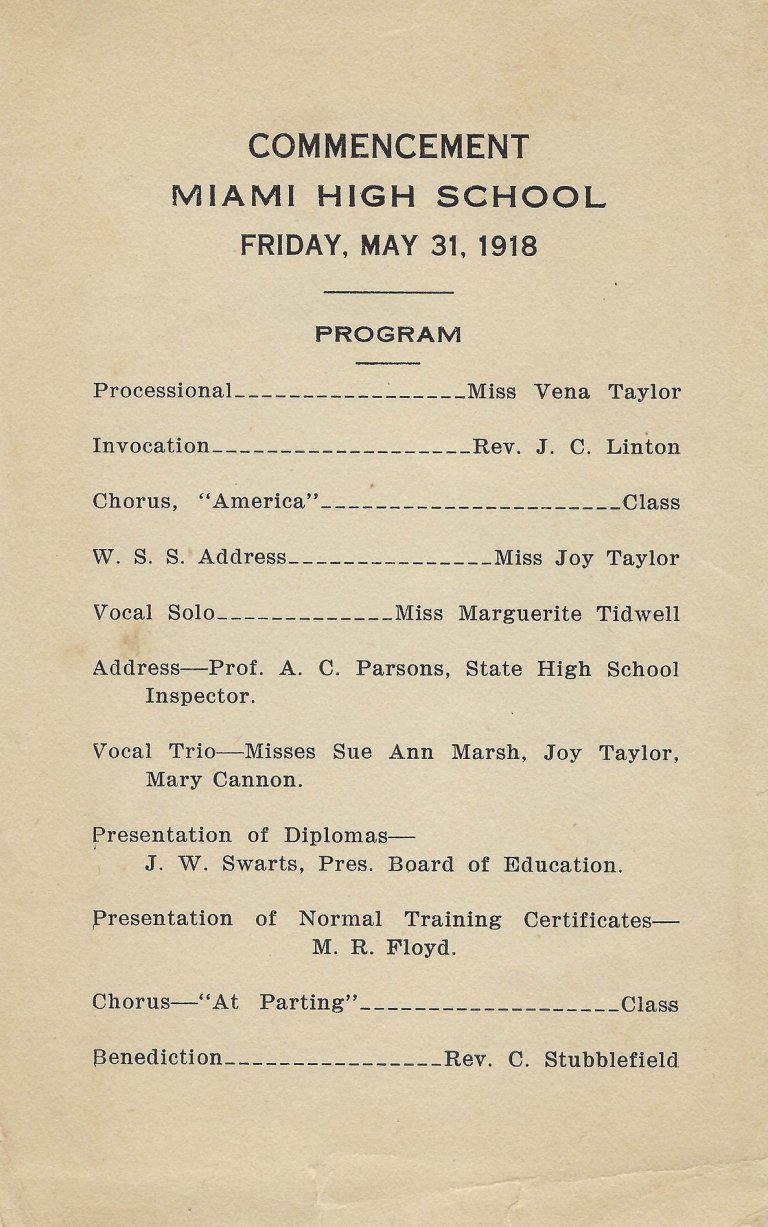Miami was no stranger to armed holdups in the 30’s. The newspaper has lots of accounts of grocery stores and gas stations being robbed at gunpoint during that decade. But one notorious outlaw caused havoc in Miami and more in nearby Commerce on a Friday in 1934.

Cyde Barrow and Pretty Boy Floyd involved in Joplin killings, April 19, 1933
The article above gives an account of 1933 killings of police officers in Springfield and Joplin, and Clyde Barrow’s involvement. Joplin was just 30 miles up Route 66 from Miami.

Clyde Barrow’s car found near Miami, December 7, 1933
According to gang member W.D. Jones, Camp Welcome, south of the fairgrounds, was a frequent stopping place. In December, 1933, hunters discovered a bullet-ridden car close to the Neosho River northwest of town which was identified as Barrow’s. A manhunt turned up empty, he got wind of the search and just managed to escape.

Trap set for Clyde Barrow in NE Oklahoma, April 2, 1934
On April 1, 1934, Barrow and his gang shot and killed two Texas state troopers near Grapevine, and headed to Miami. The article above tells how local cops got a tip saying that they were headed up here, and had a trap set. Evidently, they were confident that Barrow didn’t read the newspaper.

April 5, 1934 front page of the Miami News-Record detailing manhunt for Clyde Barrow. Click to enlarge.
On April 5, Barrow showed up, and the trap was sprung. Barrow took off like a rocket in his V8-powered sedan, but got stuck in the mud in Commerce. A gun battle ensued, and constable Cal Campbell was killed. Percy Boyd, Commerce police chief, was taken hostage and later released unharmed.
One Commerce family witnessed the shooting, and a young son found bullet casings and silverware with “BP” engraved on them after the fact. Here’s another good source of information, and proof that tripod.com sites still survive.

Bonnie and Clyde killed, May 23, 1934. Click to enlarge.
On May 23, 1934, the law caught up with Bonnie and Clyde in Louisiana. Thus ended the lives of two cold-blooded killers who had somehow become cult heroes.
In 1967, my brother took me to see Bonnie and Clyde at the Coleman. I was one of the coolest kids in class, one of a few who managed to see the adult-oriented film (thanks, Bill!). I am impressed that Miami had such a connection to the gun-toting duo, even though I was unaware of it at the time.

Miami district judge J.J. Smith provided details of Bonnie and Clyde’s Louisiana ambush for the 1967 film. Article dated May 12, 1968. Click to enlarge.
Many folks in Miami had personal remembrances of Bonnie and Clyde when the movie came out, but none more so than district judge and Miami resident J.J. Smith, who served as the defense attorney for Henry Methvin, the man tried and convicted for killing the Commerce constable. Incidentally, Methvin and W.D. Jones provided the inspiration for C.W. Moss in the movie.
So the next time you think about Bonnie and Clyde, remember that they had more than one brush with Miami and the nearby area.







































































